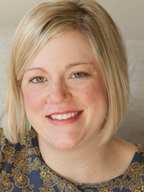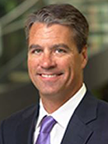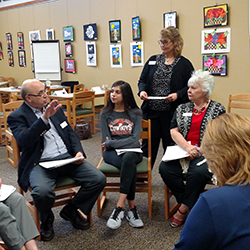Abstract
Drexel University’s College of Arts and Sciences (CoAS), one of the institution’s largest colleges, has intentionally aimed to grow and deepen its commitment to civic engagement over the last decade. CoAS has demonstrated a significant commitment to community engagement by making it a funding priority and creating a leadership position to support engagement. Because of the varying levels and formats of the college’s civic-engagement efforts, a process of assessment was needed. To channel assessment efforts, a faculty working group adopted Saltmarsh and Middleton’s pilot assessment rubric. A group of seven engaged faculty from across the college and the executive director of the Lindy Center for Civic Engagement analyzed campus websites, press releases, and presidential addresses. The group also examined additional indicators associated with policies, practices, structures, communication, and culture in the form of mission and vision statements, faculty and staff job descriptions, strategic plans, student recruitment materials, tenure and teaching faculty reviews, faculty contracts, operational budgets, and course learning objectives. These data allowed for formative and substantive evaluation of the college’s civic engagement and scholarship. A final white paper was presented to both the dean of the College of Arts and Sciences and the senior vice provost of University and Community Partnerships. Moving forward, this pilot will allow faculty and administrators to strategically address multiple dimensions of engagement at the collegiate and institutional loci.
Author Note
Cyndi R. Rickards, Criminology and Justice Studies, Drexel University; Jennifer Kebea, Lindy Center for Civic Engagement, Drexel University; Brian Daley, Psychology, Drexel University; Lawrence Souder, Communication, Drexel University.
Correspondence regarding this article should be addressed to Cyndi R. Rickards, Associate Teaching Professor of Criminology and Justice Studies, and Lindy Center for Civic Engagement Faculty Fellow, Drexel University. Phone: (215) 571-3734. E-mail: crr46@drexel.edu

Drexel University is a private urban research institution located in West Philadelphia. Deeply committed to civic engagement, Drexel defines its institutional commitment to the broader community within three dimensions: public service, academic integration, and institutional investment. Drexel utilizes the term civic engagement to encompass all institutional and individual collaborations and commitments with the community. Civic engagement across each of Drexel’s 15 schools and colleges is demonstrated at varying levels and in various formats, all tied to each school’s and college’s priorities and resources. The College of Arts and Sciences (CoAS), one of Drexel’s largest colleges, has intentionally aimed to grow and deepen its commitment to civic engagement over the last decade. Leadership in the college determined that an assessment process was needed to assure quality growth and because of the varying levels and formats of the college’s efforts toward civic engagement.
This article aims both to describe CoAS’s self-study process and to provide a case study for institutions interested in utilizing the college-level assessment rubric created by Saltmarsh and Middleton (see Saltmarsh, Middleton, & Quan, 2019, in this issue). This assessment was led by six CoAS faculty and one administrator and examined eight dimensions of college-level commitment and engagement. Set within the context of Drexel University’s history and current leadership, this article seeks to highlight the pathway of increased civic engagement across CoAS so it may serve as a reference for other institutions interested in conducting a similar self-assessment. While the university’s history, climate, location, and demographics should be considered as parts of the foundation of and rationale for the self-assessment, the process itself is transferrable.
The Rationale for College-Level Assessment of Community Engagement
Drexel’s history of cooperative education, experiential pedagogy, and civic commitments comprised the foundation of the university’s 21st-century efforts to increase community engagement and CoAS’s evolution into a modern-day liberal arts institution. The authors relied on this history as well as university leaders and strategic plans to create a self-assessment. Drexel is a unique cooperative-education university that deeply values experiential learning. Leadership at the president and dean levels identified civic engagement as a primary institutional focus, further supporting the need for such an assessment.
Cooperative and Experiential Learning
In 1919, in the aftermath of World War I, Drexel University created its now-hallmark cooperative education (co-op) program. Hollis Godfrey, Drexel’s president at the time, instituted co-op for engineering majors to demonstrate the value of education to the United States and offer students an opportunity to understand the relevance and challenges of their disciplines (Dilworth & Knowles, 2017). By the 20th century, Drexel’s original motive for co-op education had evolved, becoming a form of progressive education inspired by John Dewey and others who advocated “learning by doing” (Dilworth & Knowles, 2017, p. 267). Today, the institution’s “commitment to country” and civic duty, disciplinary knowledge, and practice endure under the leadership of its current president, John Fry, and the current CoAS dean, Donna Murasko.
Co-op and experiential education represent the cornerstone of a Drexel University education and are highlighted in the most recent strategic vision. The 2012-2017 strategic plan reiterates the following university mission:
Drexel University fulfills our founder’s vision of preparing each new generation of students for productive professional and civic lives while also focusing our collective expertise on solving society’s greatest problems. Drexel is an academically comprehensive and globally engaged urban research university, dedicated to advancing knowledge and society and to providing every student with a valuable, rigorous, experiential, technology-infused education, enriched by the nation’s premier co-operative education program.
Under this mission, President Fry’s leadership and the university’s dedication to experiential learning and civic responsibility presented an ideal opportunity to explore how such a vision, with its unique pedagogy and strategic approaches, could inform Drexel’s course offerings (Rickards, 2015).
Institutional Leadership and Commitment
In 2010, John Fry was appointed Drexel University’s 14th president. In his first public address to the university, President Fry shared his dynamic and integrated vision for an enhanced focus on civic engagement at Drexel. Three interconnected concepts defined this engagement: student and employee volunteerism; academic integration of community-based research, teaching, and clinical practice; and institutionally supported neighborhood investments. Each of these concepts has served to further define and shape Drexel’s pervasive commitment to civic engagement.
President Fry’s appointment led directly to enhanced institutionalization of and institutional support for civic engagement across the university. For example, the Office of University-Community Partnerships was founded early in his tenure, and Senior Vice Provost Lucy Kerman was recruited to lead the university’s civic engagement work. University-Community Partnerships now serves as the umbrella organization for multiple centers and initiatives, including the Lindy Center for Civic Engagement and the Dornsife Center for Neighborhood Partnerships.
The Lindy Center for Civic Engagement plays a coordinating role in the academic integration space by providing resources and coordination for community-based learning (CBL) across the institution. These resources include a biannual three-day CBL workshop for faculty who wish to incorporate community engagement into their classrooms. To date, 72 full-time Drexel faculty and 14 staff members have participated in the training, in addition to 12 faculty from institutions throughout the region, including the University of Pennsylvania, LaSalle University, Juniata College, the Philadelphia College of Osteopathic Medicine, and Delaware Valley University. The workshop provides faculty with background on the history of community engagement in institutions of higher education, active learning pedagogy, and the CBL experience so that they may begin their own course development with a solid foundation in engaged scholarship.
To further support and recognize faculty who commit to integrating the community into their teaching, research, and/or clinical practice, the Lindy Center presents two annual awards. The Dr. Mark L. Greenberg Distinguished Faculty Award for Community-Based Learning recognizes a faculty member who is deeply committed to improving the public good on the local, national, or global level through CBL. The Dr. Donna M. Murasko Distinguished Faculty Award for Innovation in Civic Engagement is presented to a faculty member who has incorporated the value of civic engagement into their teaching, research, or clinical practice, or other academic pursuit or activity in new and innovative ways. Both awards are presented at Drexel’s annual faculty recognition dinner and come with a $500 honorarium.
Drexel has further demonstrated its commitment to civic engagement through its attainment of the Carnegie Foundation’s Community Engagement Classification. The university first obtained this elective classification in 2008 and was reclassified in 2015. The classification process requires applicants to submit significant evidence regarding the institutionalization of community engagement throughout the university. Drexel is one of only 361 institutions of higher education nationwide to currently hold this classification.
College of Arts and Sciences Leadership and Engagement
Historically, Drexel University did not always recognize the value of a liberal arts education. Its commitment to engineering education often overshadowed the value of the liberal arts. However, under her leadership and strategic vision, Dean Murasko worked to transform CoAS into a destination college, a model for a modern liberal arts institution. The 2012-2017 strategic plan includes a goal to “draw on the insights of diverse fields and perspectives and meet the evolving demands of today’s fast-paced and global professional environments.” Students meet this objective when they “possess the depth of knowledge acquired through experiential learning, promoting a quicker ‘start-up’ in the work world.” The strategic plan process included several stakeholder focus groups, including students, alumni, and employers. Dean Murasko reported that students involved in the process were clear about one thing: “They want to make an impact on the world and they want to make it sooner rather than later” (D. Muraski, personal communication, April 20, 2018). She went on to state that “community-based learning became an opportunity to show our students how their discipline has an impact today” (D. Muraski, personal communication, April 20, 2018). While CBL is not explicitly identified in the strategic plan, the commitment to such engagement is reflected in the CoAS’s creation of leadership positions, teaching policies, and commitment to financial resources.
In a moment in 2011 that solidified her commitment to the college’s civic engagement, Dean Murasko visited a CBL course inside a local correctional facility that brought Drexel students and incarcerated men together as classmates. She reflected on this experience:
I remember going to the first [CBL class] graduation for the course in the prison. And that was where I knew we were doing exactly the right thing. The inmate said that he had always thought of him being in prison was just his problem. He never thought of it as a larger context, but he now had an ability to put … what was happening into a larger context. Our student, who was getting a bachelor’s and a master’s at the same time, said, “I have taken 230 credits to graduate, and three have changed my life. These three credits showed me how everything I was planning on doing now has a reason for me to do it and gives me more energy to go do it.” (D. Murasko, personal communication, April 19, 2018)
This experience with the CBL course deepened Dean Murasko’s commitment to the development of a dedicated leadership role in CoAS, and in 2012 she created the new position of senior assistant dean for community engagement. As a result, CoAS has led the university in its commitment to CBL and has become an early supporter and adopter of CIVC-101, the university-wide civic engagement course for all first-year students.
Multiple community-engaged programs have developed as a result of CBL courses in the college. These programs represent a commitment to continuing and sustaining a program or partnership typically initiated from a single CBL course. The ability to transform CBL courses into community-engaged programs demonstrates the value Drexel places on creating space and resources for long-term faculty engagement. Seven independent programs have been created by CoAS faculty in the departments of communications, criminology, science, and English and philosophy as a result of a CBL course or community partnership: Drexel Edits, Writers Room, UConnect, Story Medicine, Hospice Journaling, Connections in STEM, and Inside-Out Prison Exchange. These independent programs engage students and faculty in coursework, co-ops, and co-curricular learning.
Drexel Edits is an academic program created by a faculty member in the Department of Communications and represents one example of a CBL course that evolved into a community-engaged program. In spring 2010, communications teaching professor Lawrence Souder offered a graduate course in technical editing in which he wanted to include a real-world experiential component. He brokered working relationships with small local nonprofit organizations so that each student could work with an actual client and edit a real document, and that the nonprofit partner could get competent editing under the supervision of a professional editor and teacher. At the end of the course, some students decided to continue working on a pro-bono basis with their nonprofit partners. Souder saw the potential for creating wider and more efficient access to these editing services. He proposed Drexel Edits, a clearinghouse to formalize the mechanism of partnering students with local nonprofits, thereby contributing to the university’s newly adopted mission to become “the most civically engaged university in the United States.” This program evidences Dean Murasko’s commitment to this work at the college level. Drexel Edits is not only a civically engaged program, but it also represents a culture of civically engaged work. The dean’s support required more than a vision; its sustainability also depends on the university’s financial commitment.
Funding and Sustainability
CoAS has demonstrated a significant commitment to community engagement by making it a funding priority and creating a leadership position to support engagement. To date, the CoAS dean has committed to funding 10 CBL courses per term and has outlined a process that ensures equity across all departments. Additionally, the dean also funds community-engaged programs. Moreover, the leadership position of senior assistant dean for community engagement was created to support faculty in identifying, developing, and offering academic community-engagement opportunities. This position has been pivotal in bridging faculty members’ disciplines and pedagogy with the Lindy Center for Civic Engagement. Together, the academic position and civic engagement office offer faculty a breadth and depth of support previously unseen.
CoAS’s commitment to community engagement has increased under the leadership of Dean Murasko and President Fry. In many ways, prior to 2012, CoAS did not have the resources to implement and promote its commitment to community engagement. In the last six years, however, the college has evolved with support from the Lindy Center into a model within the university for leading community-engaged pedagogy and course opportunities.
After five years of committing time, energy, and finances to community engagement, CoAS decided it needed to assess the results of these strategic investments and evaluate the impacts and opportunities arising from them. Moreover, committing to a self-assessment signaled that community engagement had evolved into a college hallmark. Thus, CoAS needed to assess this work and its stakeholders, and adjust its strengths and weaknesses accordingly.
The Process for College-Level Assessment of Community Engagement
To channel the assessment efforts, we adopted a rubric that became a tool for examining the college as the locus of engagement. While the institution and college are closely aligned in their value of community engagement, colleges have autonomy and unique identities within the university and beyond in their respective disciplines. This process allowed the assessment committee to examine the breadth and depth of community-engagement work in the college. The design of the rubric led the committee through a process of exploring the macro and micro points of engagement. Moreover, the process led the committee to think about the context of the college within the institution’s larger footprint and how CoAS might serve as an institutional model for other colleges and schools at Drexel.
To begin the assessment process, the senior assistant dean for community engagement invited a key administrator and CoAS faculty across disciplines who were actively involved in this work to participate in the rubric committee. Fifty percent of the departments were represented, including mathematics, psychology, criminology and justice studies, communications, biology, and English and philosophy. The following departments were not represented: history and politics, chemistry, physics, and sociology. Each faculty member on the rubric committee had taught a CBL course and created a program as an extension of that course.
The committee was initially introduced to the rubric and reached a common understanding about definitions of terms for the sake of conceiving the rubric’s dimensions and operationalizing the stages of development for each dimension. The committee then acknowledged the utility of the rubric and the process for using it. All faculty members agreed that the tool had potential for formative and substantive evaluations.
Following a review of Saltmarsh and Middleton’s (see Saltmarsh, Middleton, & Quan, 2019) rubric, faculty examinations found evidence of engagement across the college. Indicators were identified in CoAS policies, practices, structures, communication, and culture in the form of mission and vision statements, faculty and staff job descriptions, strategic plans, student recruitment materials, tenure and teaching faculty reviews, faculty contracts, operational budgets, and course learning objectives.
The first committee meeting was scheduled for a three-hour block, which allowed members to identify the data needed, determine the indicators, and develop a plan for delegating the review. Two members were assigned to each dimension and independently coded the data. A final three-hour working meeting was held to review each dimension and its criteria. The reviewers discussed their assessments, and the members asked clarifying questions or contributed to the final assessment. Additionally, the committee as a group made rubric- and university-specific recommendations.
During the rubric evaluation process, the committee agreed that support from department heads was necessary. An associated survey of department chairs was developed, and the results indicated favorable attitudes toward faculty members’ community-based learning and engagement activities within CoAS. Faculty in the Department of History and Politics, for example, hoped to expand their program with community organizations interested in the histories of their own neighborhoods. Faculty in modern languages valued community engagement for the opportunities it offered their students to interact with native speakers in their own cultures and circumstances. Some faculty even found direct benefits to their own work as scholars: Community engagement offered them ways to foster undergraduate research and test their theories in the real world.
Beyond these more anecdotal indicators, the application of the rubric allowed the committee to take a more objective deep dive into its practice and process of community engagement and scholarship. As a result of the process, the committee authored a white paper and shared it with college-level and provost leadership in an effort to create a roadmap for strategic plans. A summary of the recommendations resulted from committee’s scoring on the rubric appears in the Appendix.
Outcomes and Lessons Learned from College-Level Assessment of Community Engagement
In this section, we provide a mix of quantitative and qualitative data drawn from the perspectives of senior-level leaders in CoAS (e.g., the dean serving from 2003 until her recent retirement in 2018) and the broader university (e.g., the senior vice provost of university and community partnerships) about CoAS’s engagement levels, investment, outcomes achieved, missed opportunities, and future goals related to the institutionalization of community engagement within the college. The following qualitative comments were derived from semi-structured interviews with these leaders, as well as our own perspectives as current faculty members in CoAS. The questions were developed by the rubric committee and grounded in the rubric’s quantitative content. Data from the interviews were analyzed to produce the emergent themes discussed in the following sections.
Question 1: “What were the results from your efforts at college-level engagement?”
Finding meaning in today’s world. One of the primary objectives achieved through CoAS’s commitment to community engagement is that students have the opportunity to participate in real-world, hands-on learning activities through their enrollment and participation in CBL classes. These types of courses, perhaps more than others, help students connect coursework to the philosophy of a liberal arts education, which is to prepare students to make an impact on the world, including right after college. As the dean noted, CBL courses provide the opportunity for “taking the discipline and showing what it can do today” (D. Muraski, personal communication, April 20, 2018). Additionally, faculty reported that this work has reenergized their scholarship and connected them with the world outside academia. To date, 48 CoAS faculty have completed a three-day CBL workshop organized by the Lindy Center. CoAS faculty represent 68% of all trained CBL faculty across the university. A small percentage of faculty go on to develop a CBL class, though most reported anecdotally the benefits of reconnecting to scholarship outside the university through community engagement.
Reciprocal benefits. The dean commented that one of the perceived advantages of CBL courses is the reciprocal nature of their benefits and positive impacts on community members and partners who participate in these courses, as well as Drexel students and faculty. When CBL courses are thoughtfully planned and taught well, the material and activities are interactive, and each group of stakeholders derives significant value from participating in the course. One community student, enrolled in a course as a non-credit-bearing student, reflected on the best part of their CBL experience, stating, “Open communication and the comments and views of other participants. I feel that all individuals have more in common than we believe.” Meanwhile, a Drexel student commented, “This was one of the most meaningful courses I have taken at Drexel and it has given me a lasting understanding and tools to use after class ends.”
Invigorating faculty. The dean and assessment committee found that CBL courses can be useful for invigorating (or reinvigorating) faculty members. In fact, within CoAS, the number of faculty who want to teach CBL courses exceeds available financial resources. CBL courses are typically much smaller in size and require transportation and additional resources. There are many returns on this investment, and faculty development is one that is often overlooked. For example, the dean commented, “[Faculty] take their discipline and see it using a different lens. They look at their discipline differently, they give their discipline to their students differently, and I have to limit the faculty who want to do these courses because they’re not inexpensive” (D. Muraski, personal communication, April 20, 2018).
Community engagement through research and curricular-adjacent efforts. Although CBL is a key community-engagement initiative in CoAS, the dean and faculty also underscored that there are many examples of research-based (e.g., university-public school partnerships) and curricular-adjacent community-engagement efforts (e.g., Writer’s Workshop) occurring across various departments and among faculty members within CoAS. There are opportunities for faculty to engage in any number of dimensions that interest them, and CoAS has created strong entry points of engagement for them.
Missed opportunities. There was a sense among the dean and the assessment committee that even though CBL courses and CoAS’s commitment to community engagement were well-received among faculty and students, there was less awareness of these efforts and associated outcomes among alumni, donors, and others outside the university. Respondents felt that CoAS and the larger university were not as agile and successful at promoting the benefits and impacts of CBL courses. This finding represented a missed opportunity to seek potential funding for current or future CBL courses, as well as marketing to incoming and current students. In addition, although several select CBL courses or programs were known within the university’s upper-level administration, there was less awareness at that level about the success of many other CBL courses.
Question 2: “What did we learn from the process?”
Resource allocations and logistical considerations. One lesson the dean learned was to be aware of and proactive about problem solving around resource allocation and logistical issues, such as potential costs, class sizes, time needed to prepare and implement a CBL course, and transportation needs. The dean also noted that when initiating relationships with partners, it is important to explain the university’s and the community’s missions. In other words, when faculty members and representatives approach potential community partners, they need to be clear about the dual concept of discipline and community. As noted previously, there are more faculty interested in teaching CBL courses than there are available financial resources. Therefore, the dean and assessment committee learned about the importance of providing faculty with training and guidance before they propose a CBL course to ensure its feasibility prior to development.
Pedagogical lessons. The dean and assessment committee noted that another important lesson learned was the need to have well-defined learning objectives for CBL courses that are both discipline-specific and related to the community group participating in the course. Participants felt that courses needed to be designed to demonstrate how the discipline can positively impact the community. CBL courses are only designated as such after three criteria have been met: (a) The course engages with the community, (b) the course has a reflective analysis, and (c) community engagement is linked to academic learning outcomes. For example, Story Medicine, a creative fiction course, articulates traditional learning objectives for a writing course in addition to articulating the following outcomes that should result from the community partner relationship:
- use introductory fiction writing techniques;
- critique peer work objectively using learned techniques and standards;
- adapt basic fiction writing pedagogy to a broadcast format;
- engage CHOP patients with imaginative activities;
- adapt, act, and react to changeable circumstances; and,
- serve CHOP with effectiveness and sensitivity.
The importance of adding additional assessment questions and/or measures to assess comprehensively the impact and value of each CBL course represents another important lesson learned over time. Historically, the university has evaluated CBL courses using the same standardized course evaluation forms used for non-CBL courses. The strength of this approach is the ability to compare standardized data for CBL courses relative to non-CBL courses. The drawback to this approach is data and perspectives about how CBL courses impact student learning around academic, civic, and social outcomes may be missing. In addition, the standardized course evaluation form does not capture community outcomes or perspectives on faculty engagement in the course. The dean and assessment committee felt that each course’s assessment metrics should identify outcome targets specific to the course’s learning objectives and context.
Question 3: “How has attention to college-level engagement impacted wider institutionalization of community engagement?”
Matching college mission to community engagement to promote sustainability. Broadly speaking, Drexel University has a strong institutional commitment to community engagement. However, the senior vice provost did comment that upper-level administration should not dictate to individual colleges how they should engage in the community because such directives would not be authentic. The senior vice provost noted the differences in academic mission for each college and school, and maintained that efforts around community engagement should reflect those missions:
If it works for you, it works for your teaching and research, then you will sustain it and it can become a confederation of these different legitimate authentic approaches that are mission-specific for each faculty. Then the university’s civic engagement will be sustainable. But if we simply tell you this is what you’ve got to do, you’ll do it once and then you’ll change. When I look at the Dornsife Center, I look at how we can match what the faculty want to do for their teaching and research with what the community is asking for so that we can have a sustainable product.
Question 4: “What are leadership considerations in the future?”
Resource positions related to community engagement. It was clear from discussions with the dean and the assessment committee that the logistical and oversight responsibilities necessary to successfully run CBL courses require dedicated time and effort from one or more CoAS faculty members. Therefore, the most recent but not current dean is pushing for an endowed position of senior assistant dean for community engagement in the CoAS. The dean has made clear that she wants her legacy to be the college’s continued community involvement.
Budgetary implications. Drexel University has adopted a responsibility center management (RCM) model of budgeting, under which revenue-generating units are wholly responsible for managing their own revenues and expenditures. Given the higher costs associated with CBL courses, there is concern at the dean and senior vice provost levels that these costs will present challenges to the continued viability of CBL courses. The dean and the assessment committee suggested that one way to protect CBL courses is to make them requirements in the curriculum. Another opportunity is to use CBL courses as a way of branding the college “to being a first choice for the politically active, socially engaged, entrepreneurial humanist, scientist” (Murasko, 2012). The current president of Drexel University, John Fry, has committed Drexel to becoming “the most civically engaged university in the United States.” Therefore, the assessment committee felt that the tradition of civic and community engagement will continue under the current leadership.
Data needs. Although some data on incoming students and graduating seniors has demonstrated that civic engagement is important, the dean and assessment committee are aware that they need to ask more specific questions about the value of CBL courses for students, instructors of record, and community partners. If the data are positive, they will strengthen arguments to continue teaching CBL courses, even in the financial context of RCM budget models. This article has spurred ongoing discussions about how to design and implement a more comprehensive assessment system for CBL courses to better capture student and community partners’ learning around academic, civic, and social outcomes. This rubric process and subsequent white paper will be reviewed by the university’s civic engagement faculty committee, members of which are charged with introducing the rubric tool to their college. CoAS has served as a model of community engagement and can now serve as a model for self-assessment. The design of the rubric allows for college autonomy and recognizes that this work often comes from both an institutional mandate and individual faculty and programs at the college level. The rubric will be distributed and collected through the Lindy Center for Civic Engagement, the central organization leader on campus. The ability to standardize the data-collection tool across colleges will allow Drexel to present the unique impact each college has on the university’s wider commitment to community engagement.
Conclusion
The goal of participating in the rubric pilot and publication of this article is twofold: We want to contribute to the literature on community engagement, and we want to advance community-engaged scholarship by focusing on the college as a unit of engagement. Saltmarsh and Middleton (see Saltmarsh, Middleton, & Quan, 2019) did this by attending to the organizational elements of colleges that foster a culture of engagement and by developing an assessment instrument for colleges to assess the structures, policies, and practices in place for advancing community-engaged scholarship. Moreover, the rubric process has served as a mechanism for this faculty cohort to stop “doing” and intentionally reflect on the growth of engaged scholarship. We wanted to practice precisely what we ask of our students in our CBL courses and partnerships. This process afforded the authors an opportunity to pause, assess, and reflect on the practice and process of community engagement and scholarship. The results will allow Drexel to strategically address multiple dimensions of engagement at the collegiate and institutional levels. The dean, department heads, and engaged faculty can use the results of this self-assessment to continue growing community engagement and articulating its value to the college. This rubric will serve as both a tool and an opportunity to deepen campus-wide engagement.
References
Dilworth, R., & Knowles, S. G. (2017). Building Drexel: The university and its city, 1891-2016. Philadelphia, PA: Temple University Press.
Murasko, D. M. (2012, December 20). Transforming the core of Drexel: Strategic planning for a world-class College of Arts and Sciences [Institutional document].
Rickards, C. R. (2015). Examining 21st-century skill acquisition as a result of democratic engagement within a side-by-side community-based learning course (Doctoral dissertation). Retrieved from Dissertations & Theses @ Drexel University; ProQuest Dissertations & Theses Global. (Order No. 3734175)
Saltmarsh, J., Middleton, M., & Quan, M. (2019). Institutionalizing community engagement: the college within a university as a missing organizational link. eJournal of Public Affairs, 8(3), Article 1.
Appendix
Summary of Recommendations
Dimension 1: Leadership
- All CoAS leadership-level job postings should include language in support of community engagement.
- Associate deans and other CoAS leadership should be invited to attend the community-based learning training.
- CoAS should formalize a community engagement faculty advisory board within CoAS.
Dimension 2: Mission and Vision
- The next CoAS strategic plan should include explicit language in support of community engagement and CES.
- Community engagement should be acknowledged as a high-impact practice and retention tool.
Dimension 3: Visibility and Communication
- CoAS community engagement committee should work with the CoAS communications team to continue to develop and refine marketing efforts to position CoAS as a community engagement leader at Drexel.
- Department heads should ensure that language be incorporated into faculty and staff job descriptions about CoAS’s commitment to community engagement. This includes information about incorporating community engagement into teaching, research, and service.
- Drexel University’s employee volunteer program, “Dragon Volunteer,” should also be included as a way to engage, especially staff.
- The prevalence of community engagement examples in student recruitment materials should be increased.
Dimension 4: Recognition
- CoAS should work with the Lindy Center to lead Drexel in the development of a meaningful process for an engaged department designation.
- Community-engaged scholarship should be clearly defined and recognized in tenure and teaching faculty reviews.
Dimension 5: Rewards
- Community-engaged scholarship should be formally recognized in tenure and promotion.
- Policy documents should be defined in such a way that they include engaged scholarly work across the faculty roles.
- Explicit criteria for community engagement in teaching, in research and creative activity, and in service should be created.
- Criteria in the areas of research and creative activity should acknowledge that not all community-engaged scholarship will appear in peer-reviewed journals.
- CoAS should continue to reflect CES in faculty contracts when appropriate.
Dimension 6: Capacity-Building Infrastructure for Support and Sustainability
- CoAS should clarify that the process for requesting funds may be uniform or formalized with a clear operational budget.
- The college should continue training/development, perhaps tied to UWP writing workshops/retreats so it builds toward publications and scholarship circles.
- CoAS should formalize mentor roles of other CE faculty to help mentor new faculty and to develop faculty as leaders/experts within their respective disciplines/fields.
- Writing retreats and assistance finding places to submit CES for publication should be developed.
Dimension 7: Assessment
- Associate deans for research should utilize COEUS to collect community-engaged research.
- Data are collected and assessed on community-based courses.
- Community impact and partner impact should not occur at the collegiate level; rather, UCP should manage this assessment aspect.
- CoAS should begin to measure one aspect of CBL courses by measuring whether the community engagement aspect of the course enhances the learning objectives.
Dimension 8: Curricular Pathways
- CoAS should develop an engaged department approach to highlight the level of community engagement.
- The college should consider co-curricular student opportunities in community engagement assessment.
Authors
 Cyndi Rickards comes to higher education with over a decade of experience in the criminal justice field as an administrator of an alternative school. Her graduate research explored racial disparities in urban juvenile drug use patterns. More recently, her research has examined the emergence of 21st-century skills as a result of democratic engagement within community-based learning courses. Rickards currently an Associate Teaching Faculty member of Criminology and Justice Studies at Drexel University, College where she develops and teaches community-based learning. She regularly teaches courses within the Philadelphia Prison System and brings together Drexel students and incarcerated students for and Inside-Out course. In 2010 she facilitated the development of Side-by-Side, an evolution of the Inside-Out International Prison Exchange program, which brings college and community students together in partnership in class experiences.
Cyndi Rickards comes to higher education with over a decade of experience in the criminal justice field as an administrator of an alternative school. Her graduate research explored racial disparities in urban juvenile drug use patterns. More recently, her research has examined the emergence of 21st-century skills as a result of democratic engagement within community-based learning courses. Rickards currently an Associate Teaching Faculty member of Criminology and Justice Studies at Drexel University, College where she develops and teaches community-based learning. She regularly teaches courses within the Philadelphia Prison System and brings together Drexel students and incarcerated students for and Inside-Out course. In 2010 she facilitated the development of Side-by-Side, an evolution of the Inside-Out International Prison Exchange program, which brings college and community students together in partnership in class experiences.
 Dr. Jennifer Johnson Kebea has 15 years of experience in higher education, holding past positions in enrollment management, institutional advancement, educational consulting, and academic affairs. For the last decade, she has been part of Drexel University’s expanding efforts around civic engagement. Currently, Dr. Kebea serves as Executive Director of the Lindy Center for Civic Engagement, where she leads a dynamic team and oversees the development of four core civic priorities including community-based learning, civic leadership, public service, and community partnerships. Dr. Kebea’s research interests revolve around a university’s dual role to serve as both a civic educator and as an anchor institution, and how universities engage students in anchor strategy. Dr. Kebea is also affiliated faculty with Drexel University’s School of Education and Goodwin College of Professional Studies.
Dr. Jennifer Johnson Kebea has 15 years of experience in higher education, holding past positions in enrollment management, institutional advancement, educational consulting, and academic affairs. For the last decade, she has been part of Drexel University’s expanding efforts around civic engagement. Currently, Dr. Kebea serves as Executive Director of the Lindy Center for Civic Engagement, where she leads a dynamic team and oversees the development of four core civic priorities including community-based learning, civic leadership, public service, and community partnerships. Dr. Kebea’s research interests revolve around a university’s dual role to serve as both a civic educator and as an anchor institution, and how universities engage students in anchor strategy. Dr. Kebea is also affiliated faculty with Drexel University’s School of Education and Goodwin College of Professional Studies.
 Dr. Brian Daly is the Interim Department Head for the Department of Psychology at Drexel University. He is a licensed psychologist specializing in child and adolescent psychology. Dr. Daly’s areas of interest in research include prevention and resiliency in urban youth; school mental health promotion; evidence-based psychosocial interventions for youth; clinical and health psychology; assessment and treatment of children with chronic illness; assessment of trauma in youth; and adolescent risk behaviors. Dr. Daly’s areas of clinical interest include the assessment and delivery of evidence-based psychosocial interventions for children with chronic illness, emotional, behavioral, or social problems, or learning issues.
Dr. Brian Daly is the Interim Department Head for the Department of Psychology at Drexel University. He is a licensed psychologist specializing in child and adolescent psychology. Dr. Daly’s areas of interest in research include prevention and resiliency in urban youth; school mental health promotion; evidence-based psychosocial interventions for youth; clinical and health psychology; assessment and treatment of children with chronic illness; assessment of trauma in youth; and adolescent risk behaviors. Dr. Daly’s areas of clinical interest include the assessment and delivery of evidence-based psychosocial interventions for children with chronic illness, emotional, behavioral, or social problems, or learning issues.
 Lawrence Souder earned his PhD in the rhetoric of science from Temple University after working for a number of years as a technical writer and editor for IBM and ADP. His research is focused on the ethics of communications among scientists and between scientists and the public. He is also the founding director of Drexel Edits, a center that offers pro-bono editing services to nonprofit organizations in the neighborhoods bordering Drexel University. He teaches graduate courses in communication ethics, technical and science writing and editing, and nonprofit communication for the master’s and undergraduate programs in the department.
Lawrence Souder earned his PhD in the rhetoric of science from Temple University after working for a number of years as a technical writer and editor for IBM and ADP. His research is focused on the ethics of communications among scientists and between scientists and the public. He is also the founding director of Drexel Edits, a center that offers pro-bono editing services to nonprofit organizations in the neighborhoods bordering Drexel University. He teaches graduate courses in communication ethics, technical and science writing and editing, and nonprofit communication for the master’s and undergraduate programs in the department.




